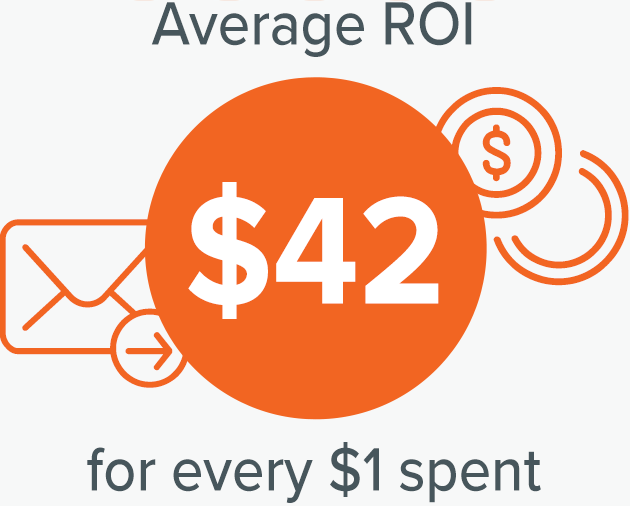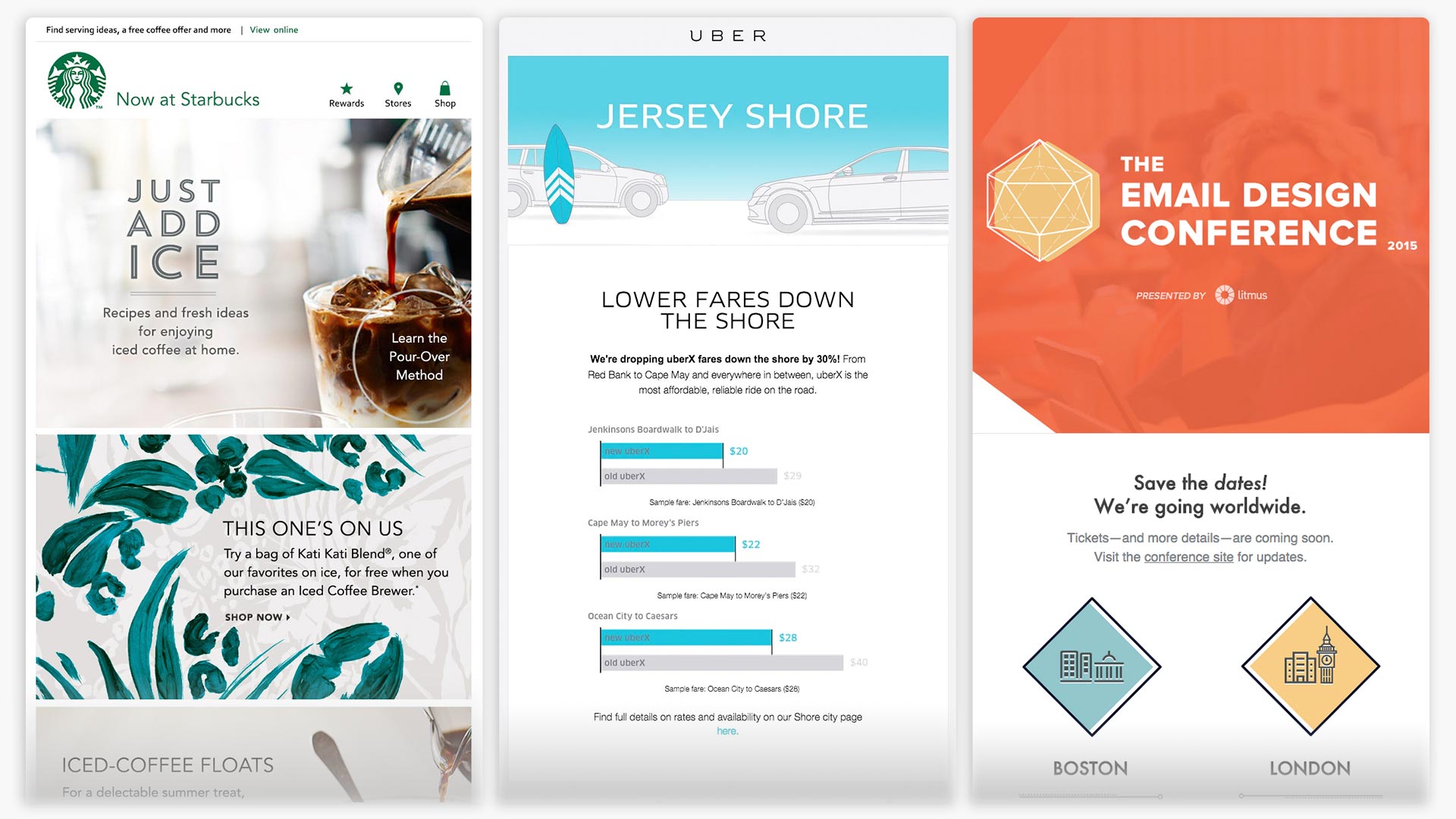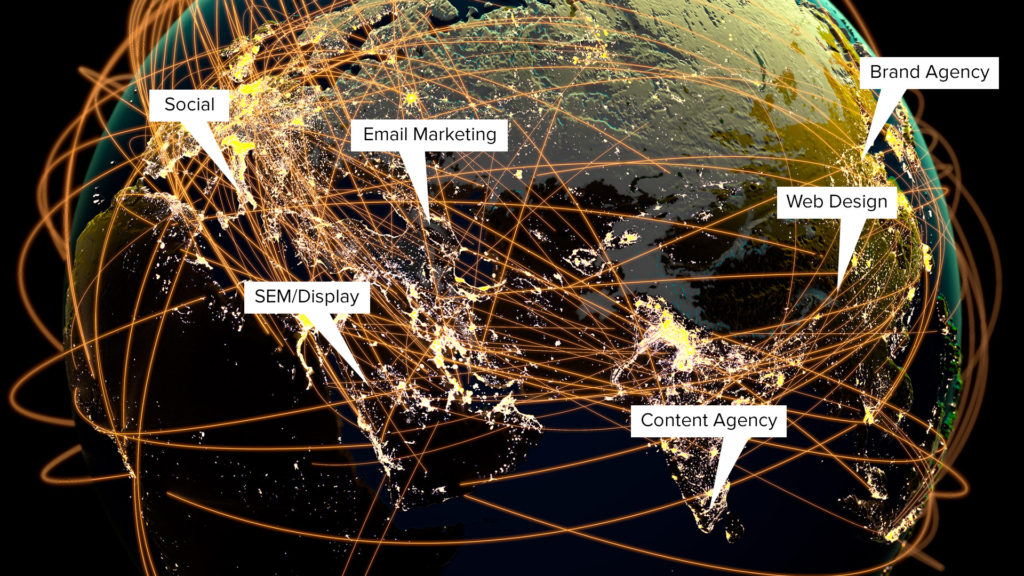Did you know that, as of 2022, there were 4.2 billion email users worldwide? And with that number predicted to hit 4.3 billion by 2024, it’s no wonder that email plays such a vital role in a successful marketing strategy.

In fact, email marketing has been delivering the highest ROI of any marketing channel for over 10 years, returning an average of $42 for every $1 spent.
But there’s a lot of competition when it comes to email marketing.
In 2022, a whopping 319 billion emails were sent a day, and it’s predicted that we’ll be sending an estimated 376 billion emails a day in the next four years.
So with all those emails flying around, how do you ensure that your email stands out from the crowd?
It’s all about sending the right email.
Here’s how you can craft killer email marketing campaigns that deliver that all-important ROI.
The personal touch
When it comes to email marketing, personalisation is the name of the game. The more your customers feel that you’re speaking directly to them, the more likely they are to connect with your brand and respond to your marketing efforts.
What’s in a name
People love hearing their own name.
In fact, studies have shown that a different part of our brain activates when we hear our own name compared to the names of others. Including your customer’s name in your email is more than just a nice personal touch, it’s science.
Read the room
When writing your emails, you need to remember who your audience is, and who your brand is to them.
While a formal ‘Dear Mr. Walk’ might be perfectly appropriate in a B2B sales email, it may come off as stiff and robotic in a B2C setting.
Audience segmentation
Market research and audience segmentation is vital to crafting a personalised email marketing campaign. The more you know about your audience, the better you can tailor your sales emails to connect with them.
By segmenting your audience based on characteristics such as age, gender, interests, geography and previous interactions with your brand, you can begin to craft buyer personas. By tailoring your marketing efforts to these buyer personas, you can ensure that your customers only receive the emails that are relevant to their interests and needs.
In a B2C setting, audience segmentation can be as simple as making sure that emails for female products are only sent to your female audience. But in a B2B setting, things can be a little more complicated. Audiences may need to be segmented based on the size of their business, their industry, location, budget, technological requirements, which products and services they’re most likely to engage with, and much more!
Automate the process
Automation allows you to ensure that you’re always sending the right emails at the right time for a more personalised experience.
Platforms such as HubSpot, MailChimp and Campaign Monitor offer simple, straightforward email automation tools that allow you to set up email triggers based on previous interactions with your brand. For example, an email chain may be triggered when someone requests a quote or downloads a PDF from your website.
These triggers allow you to nurture leads by ensuring that they automatically receive the most relevant emails to their needs and interests.
Visual appeal
They say a picture is worth a thousand words, and yet, when it comes to emails, many people seem to forget this rule.
While you should never sacrifice the quality of your message for the sake of a ‘pretty’ email, designing an email to look as good as it sounds is a great way of attracting your reader’s attention to your email and keeping it there.

Brands such as Apple, Uber and Starbucks are all excellent examples of how powerful messaging and visually striking imagery can be combined to grab your reader’s attention while simultaneously capturing the unique personality of your brand.
Writing your email
There’s no single way of developing an email marketing strategy. Crafting an effective email typically involves a lot of A/B testing and experimentation.
But as an experienced email marketing agency who has been crafting successful emails for our clients for years, we’d like to share a couple of ‘best practices’ that we’ve picked up along the way.
The subject line
Your subject line will likely be the first thing your customer sees, and if you don’t absolutely nail it, it may be the only thing they see. The subject line can often be the difference between whether or not an email gets opened.
There are many ways that you can pique your reader’s interest and inspire them to open your email:
- Ask a question
- Use their name
- Offer something of value
- Tell them something they don’t know
Be careful to avoid ‘spammy’ language such as ‘free’, ‘sale’ and ‘discount’, as such language may see your email landing in your customer’s spam folder instead. Using ALL CAPS or too much punctuation should similarly be avoided.
Remember that there’s no cookie-cutter solution to writing the perfect subject line. With such fierce competition within your customer’s inbox, it may take some trial and error to determine what subject lines help your email cut through the marketing noise.
Try A/B testing your subject lines to see what works best.
The preheader
The preview text or ‘preheader’ is the snippet of copy that typically sits right next to the subject line in your customer’s mailbox. For this reason, the preheader can be considered your subject line’s ‘sidekick’, with the two working together to encourage customers to open your email.
The preheader is usually around 40-50 characters long, but different devices and email clients will show this snippet differently, so it’s best to gather information and statistics about what email client is most popular amongst your target audience and ensure that your email is optimised accordingly.
Here are some things to consider when writing your preheader:
- Make it interesting: You want your email to stand out, so don’t be generic.
- Offer immediate value: Give your customers a reason to want to read your email.
- Consider a CTA: Tell your customer what you want them to do before they’ve even opened your email.
- Make an offer: A customer that knows what they stand to gain from your email is more likely to open it.
- Capture your email’s primary message: Outline the key takeaway you want your customer to leave with after reading your email.
A healthy body
When it comes to email marketing, trimming the fat is vital to your success.
It’s said that you only have three seconds to win a customer’s attention, and even when you do, it’s an up-hill battle to keep it.
That’s why every line of your sales email needs to add value and encourage readers to continue reading. Remember that while every line is an opportunity to pull your reader deeper into the text, it also comes with a chance of losing them, so choose your words wisely.
Try to get to the point early. State the purpose of your email from the very start so that your customers know what they can expect to gain from reading it.
Location, location, location
The layout of your email can heavily impact its effectiveness. The location of offers and CTAs can affect your clickthrough rate, so it’s important that you consider the structure of your email carefully.
Try A/B testing the location of important information to see what works best.
Make it scannable
Most people tend to skim emails rather than reading them from end to end.
Include lots of headings, short, sharp paragraphs, bullet points and imagery to break up the text, and make your email scannable.
You don’t want to overwhelm your reader with great walls of text.

Mobile optimisation
In 2019, 60% of email opens came from mobile devices, so it’s important that emails are mobile-optimised:
- Character length: Mobile devices typically display fewer characters in subject lines and preheaders. Test your email across multiple devices to determine optimal character length.
- Images: Not all mobile devices will automatically display images. Your copy needs to make sense with or without your graphics.
- CTAs: Your CTA needs to be responsive and easily accessible. CTAs placed towards the top of emails typically work better on mobile devices.
- Testing: You can’t be certain how well your email is going to work on a mobile device until you see it in action. Test your email across multiple devices before sending it.
A strong call to action
Here’s the big one. Your CTA is arguably one of the most important parts of your email as it’s where you finally ask your readers to do something.
Where do you put your CTA?
CTAs can be placed at the top, bottom or in the middle of your email. Some emails contain multiple CTAs, while others have just the one.
While there’s no hard and fast rule about where to put your CTA, your choice of location can have a major impact on your email’s effectiveness. Consider split-testing CTA locations to find out what your customers respond to best.
Make it responsive
A naked URL that’s been copied and pasted directly into the text is a sure way to make your email look ugly and unprofessional. Responsive buttons are more attractive, easier to find, and typically look more professional.
Language that inspires action
Some words inspire action better than others.
CTAs that include words such as click here, submit or download imply effort and can cause friction with your readers.
Try using value-based CTAs such as learn more, get 10% off and try it free instead. These low-friction words typically see a better click-through rate as they imply that your reader has something to gain.
The power of the ‘P.S.’
In his ‘Handbook of Direct Mail’, Professor Siegfried Vogele found that 90% of people read the P.S. in direct response mail, even if they read no other part of the letter. In fact, the P.S. is typically the first place the eye lingers before scanning back up to the top of the letter to read its contents.
And it’s no different for email.
As the first thing that your customer reads, a P.S. (should you choose to include one) has the power to connect with your customer and get them interested in reading your email.
A P.S. typically has a more personal feel and can help you connect with your customers on a deeper level. A powerful P.S. feels like a whisper; a private conversation between yourself and the reader, revealing extra information, offers or discounts shared like a secret between friends.
A P.S. rarely exceed 3 lines and it’s important that you offer your customers something new here, rather than simply parroting the contents of the email.
This is also a great place to put a CTA.
Email marketing that drives results
As of May 2020, emails had an average open rate of 16.22%, and a clickthrough rate of just 7.17%.
That’s a lot of unopened emails.
There’s no doubt that email marketing is tricky, but those who can master it will see a far greater ROI than any other marketing channel can offer.
There’s no ‘one size fits all’ when it comes to developing a successful email marketing campaign, so it’s important that you take an in-depth analysis of your market to see what works best with your customers.
Ultimately, email marketing involves a lot of trial and error, and continuous optimisation for the best results.
Need help from a professional email marketing agency?
At The Walk, we have years of experience crafting effective email marketing campaigns for our clients.
If you have a marketing email that you think needs a bit of love, send it through to us. One of our email specialists will take a look and give you suggestions as to how you can improve it — for free!





Be the first to comment on "Boost your revenue with email marketing"